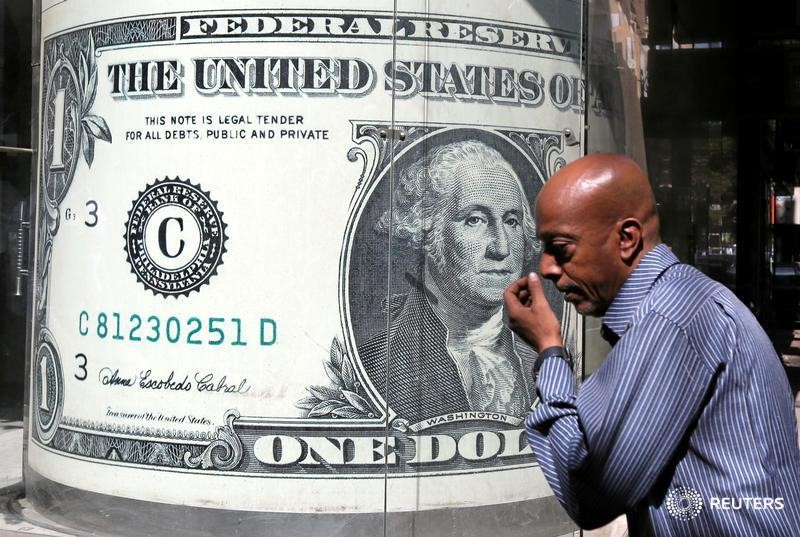Investing.com - The dollar fell to fresh five-week lows against a basket of the other major currencies on Friday amid expectations that the Federal Reserve will raise interest rates at a more gradual rate than some investors had previously anticipated.
The U.S. dollar index, which measures the greenback’s strength against a trade-weighted basket of six major currencies, was at 100.11 in late trade, after falling to lows of 99.97 earlier, the weakest level since February 7.
The index was down 1.13% overall for the week.
The Fed raised interest rates to 1% on Wednesday; the second hike in three months and stuck to its outlook for two more rate hikes this year and three in 2018.
But the U.S. central bank did not flag any plan to speed up the pace of monetary tightening, with Fed Chair Janet Yellen reiterating that the pace of rate hikes would be gradual.
The dollar fell to more than to-week lows against the yen, and USD/JPY was last trading at 112.68, off 0.55% for the day.
The Bank of Japan kept monetary policy on hold on Thursday, in a widely anticipated decision, underlining the diverging monetary policy paths of major central banks.
The euro slid amid renewed concerns over political developments after after a poll showed far-right anti-EU leader Marine Le Pen widening her lead over opponent Emmanuel Macron in the first round of France's presidential elections.
EUR/USD touched lows of 1.0728 and was last at 1.0737, down 0.26%.
The pound pushed higher, with GBP/USD rising 0.31% to 1.2395 in late trade.
Sterling remained supported after the Bank of England held interest rates at record lows at its meeting on Thursday, but the meeting minutes showed the monetary policy committee was split on the decision for the first time in more than a year.
The Australian and New Zealand dollars posted large weekly gains against the weaker greenback.
AUD/USD rose 0.36% to 0.7705 on Friday and ended the week up 2.16%, snapping five weeks of losses.
NZD/USD added 0.44% to 0.7016 late Friday, bringing the week’s gains to 1.36% after two weeks of losses.
In the week ahead, investors will be watching Fed speakers, including Chair Janet Yellen, as they look for more clues on the timing of the next U.S. rate hike.
Market participants will also be awaiting data on inflation from the UK and euro zone surveys on business activity as Britain braces for Brexit.
Ahead of the coming week, Investing.com has compiled a list of these and other significant events likely to affect the markets.
Monday, March 20
Financial markets in Japan will be closed for a holiday.
Canada is to release data on wholesale sales.
Chicago Fed President Charles Evans is to speak about current economic conditions and monetary policy at the National Association for Business Economics luncheon in New York.
Tuesday, March 21
The Reserve Bank of Australia is to publish the minutes of its latest monetary policy meeting, giving investors insight into how officials view the economy and their policy options.
The U.K. is to release a report on consumer price inflation.
Canada is to release figures on retail sales.
New York Fed President William Dudley, Kansas City Fed President Esther George and Cleveland Fed President Loretta Mester are all due to make public appearances.
Wednesday, March 22
The National Association of Realtors is to release data on U.S. existing home sales for February.
Thursday, March 23
The Reserve Bank of New Zealand is to announce its benchmark interest rate and publish a policy statement which outlines economic conditions and the factors affecting the monetary policy decision.
The UK is to produce data on retail sales.
The US is to release the weekly report on jobless claims as well as data on new home sales.
Later, Fed Chair Janet Yellen is to deliver opening remarks at the Federal Reserve System Community Development Research Conference, in Washington DC.
Minnepolis Fed President Neel Kashkari at Strong Foundations Conference and Dallas Fed President Rob Kaplan are also on tap.
Friday, March 24
New Zealand is to report on the trade balance.
The euro zone is to publish survey data on private sector business activity.
Canada is to release inflation figures.
The U.S. is to round up the week with a report on durable goods orders.
